Defense & Security
Development of South Korea’s Aviation Industry Based on Military Aircraft and Its Global Competitiveness
Image Source : Wikimedia Commons
Subscribe to our weekly newsletters for free
If you want to subscribe to World & New World Newsletter, please enter
your e-mail
Defense & Security
Image Source : Wikimedia Commons
First Published in: Oct.30,2025
Oct.30, 2025
1. Introduction
● Research Objective and Scope
The objective of this study is to examine the historical development process of the Republic of Korea Air Force (ROKAF) and analyze the impact of indigenous military aircraft development on South Korea's self-reliant national defense and defense industry. Specifically, it systematically documents the chronological progression: from the early period of dependence on U.S. aid following its establishment, to the independent development and export success of domestically produced training aircraft and fighters, and finally, the ongoing development of the next-generation fighter (KF-21). The scope of this research covers the major aircraft procurement, indigenization efforts, export cases, and future prospects of the ROKAF from its establishment in 1949 to the present.
● The Development of the ROK Air Force and the Importance of Indigenous Aircraft
The ROKAF is a core element of national security. Given the geopolitical characteristics of the Korean Peninsula, securing air superiority and maintaining long-range precision strike capability are essential for the national defense strategy. The development of this air power is not merely about strengthening military capabilities; it has played a crucial role in maintaining deterrence and strategic balance within the Northeast Asian security environment. In particular, the development of indigenous military aircraft is highly significant as a means to reduce reliance on foreign weapons and secure independent capabilities for sustaining military strength. This not only contributes to the growth of the defense industry and the enhancement of advanced technological capabilities but also leads to economic benefits through aircraft exports and the elevation of international stature. Therefore, the development of indigenous military aircraft is assessed as a national priority that simultaneously realizes self-reliant national defense and generates substantial military and economic ripple effects.
2. Establishment and Early History of the ROK Air Force (1949–1960s)
2.1. Establishment Background and Aircraft Operations during the Korean War
● Background of Establishment
The Republic of Korea Air Force (ROKAF) was officially established on October 1, 1949. This was driven by the recognition that securing air superiority was an essential component of national security, given the geopolitical characteristics of the Korean Peninsula and the state of division. At the time, the Korean military had virtually no air power base and formed the ROKAF organization through aid from the U.S. military and a few decommissioned aircrafts.
● Initial Force Status
At the time of its establishment, the ROKAF possessed only a few trainers and small transport aircrafts, and it had not secured any serious fighter capabilities. Due to the lack of aircraft maintenance and pilot personnel, its ability to conduct independent operations was limited.
● Operations during the Korean War
Immediately following the outbreak of the Korean War in June 1950, North Korean forces launched their invasion led by Soviet-made Yak-9 fighters, Il-10 attack aircraft, and T-34 tanks. In contrast, the Republic of Korea, lacking operational fighter aircraft, lost air superiority. The tide of the war turned with the deployment of air power from the U.S. and other UN forces, with the U.S. Air Force's F-51 Mustang, F-80 Shooting Star, and B-29 Superfortress playing key roles. The ROKAF subsequently received some F-51 Mustangs and T-6 trainers from the U.S. military, conducting limited combat missions, reconnaissance, and close air support. This period served as a crucial opportunity for the ROKAF to accumulate experience in air operations and fighter aircraft management through active wartime participation.
2.2. Dependence on U.S. Military Aid Aircrafts
The ROKAF initial military strength was largely secured through U.S. military aid. From immediately after the outbreak of the Korean War through the post-war reconstruction period, the U.S. provided a variety of aircraft, including F-51 Mustang fighters, T-6 Texan trainers, F-86 Sabre fighters, and C-46/C-47 transport aircraft. This assistance greatly contributed to rapidly filling the military capability gap and establishing air operation capabilities in a short period.
However, this simultaneously led to the entrenchment of a structure where the ROKAF had no choice but to rely on the U.S. for its aircraft maintenance system, parts supply, and operational doctrine. This dependency acted as a constraint on South Korea's ability to secure its own unique weapon systems and technologies.
Nevertheless, South Korea accumulated valuable experience in operating its forces based on these U.S. aid aircraft. Specifically, focusing on the Air Force maintenance depots, the ROKAF developed the capability to independently perform aircraft inspection, life extension, and parts replacement. Through this process, skills in training aircraft maintenance personnel and interpreting and applying maintenance manuals were accumulated, which became the technological foundation for the Korean aerospace industry.
Ultimately, this experience served as a turning point, prompting South Korea to move beyond being a mere recipient of aid to recognize the necessity of self-reliant force construction and indigenous aircraft development.
3. Republic of Korea Air Force Chronology
The chart below summarizes the changes in the Republic of Korea Air Force (ROKAF)'s major fighters and trainers introduced since its establishment, organized by period. It visually represents the modernization process, starting with the T-6 Texan and F-51 Mustang in the 1950s, progressing through the introduction of jet fighters like the F-86, F-4, and F-5, and continuing to the F-16 and F-15K. With the appearance of domestically produced aircraft, including the KT-1, T-50, and KF-21, South Korea has leapfrogged from being a simple importer of military forces to a developer of advanced aircraft technology. This chronology visually summarizes the history of the ROKAF's air power development alongside the growth trajectory of the domestic aerospace industry.
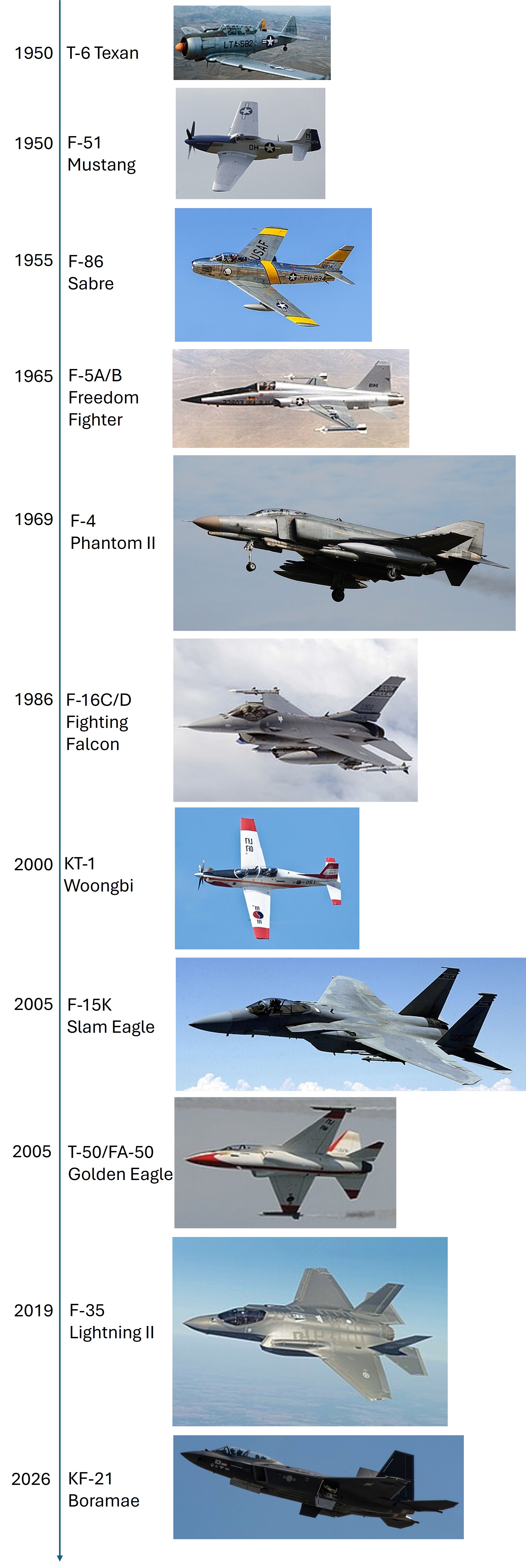
Figure 1. Republic of Korea Air Force Fighters Introduction and Operation Chronology (Source: Wikipedia)
4. Modernization and Force Enhancement (1970s–1990s)
This period was a pivotal time when the ROK Air Force transitioned from quantitative expansion to a qualitative leap in capability. The introduction of the F-4, F-5, and F-16 fighters moved beyond the scope of simple foreign aid and served as a catalyst for establishing modern fighter operation capabilities and an independent aerospace industry base.
4.1. Introduction of the F-5 Freedom Fighter (1965–): Mass Deployment, Operational Experience, and Indigenization Foundation
In 1965, the ROKAF received 20 units through U.S. aid and operated them, calling the aircraft the "Freedom Fighter." Subsequently, a larger batch of 146 units was introduced in 1974. The F-5 is a lightweight fighter that contributed significantly to the quantitative expansion of the ROKAF due to its low cost and maintenance fees, coupled with excellent maneuverability. Crucially, the implementation of a licensed production system allowed the Korean aerospace industry to accumulate valuable experience in assembly and maintenance, laying the foundation for future indigenous aircraft development.
Table 1. F-5 Freedom Fighter Introduction (Source: Wikipedia, Namuwiki)
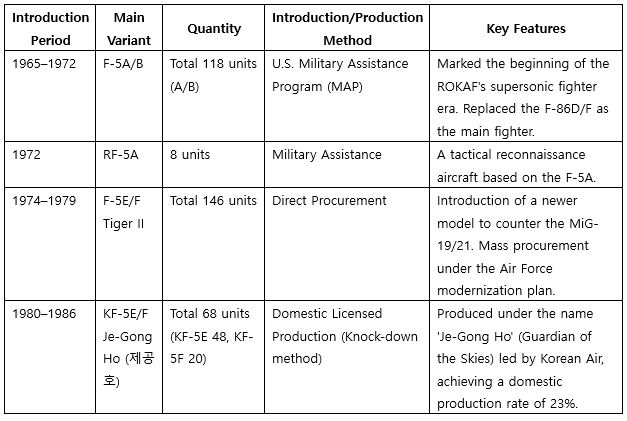
4.2. Introduction of the F-4 Phantom II (1969–2024): Securing Strategic Deterrence (Qualitative Improvement)
ROKAF introduced the F-4 Phantom II fighter beginning in 1969. The F-4 was, at the time, a globally representative multi-role fighter capable of performing both high-speed interception and ground attack missions. The introduction of this aircraft marked a turning point, allowing the ROKAF to move beyond simple tactical support to acquire strategic deterrence capabilities, providing a qualitative edge against North Korea's MiG fighter fleet. The ROKAF acquired 6 units on loan in 1969 and purchased 5 units with national defense contributions (defense fund) in 1975. Subsequently, continuous purchases resulted in a total operation of 222 units (F-4D 92 units, F-4E 103 units, RF-4C 27 units), with the aircraft finally retired in 2024.
Table 2. F-4 Phantom II Introduction (Source: Wikipedia, Namuwiki)
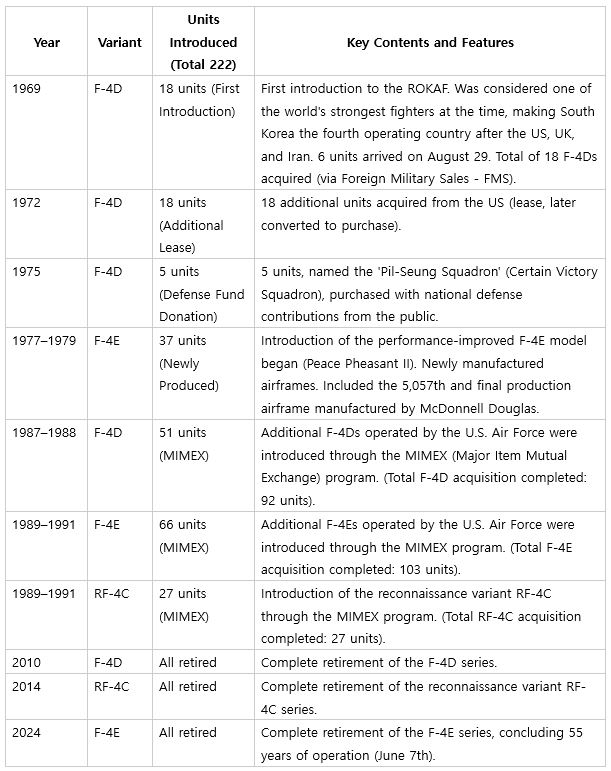
4.3. Introduction of the F-16 Fighting Falcon (1986–): Advanced Force Capability + Accumulation of Domestic Production Experience
Beginning in 1986, the introduction of the F-16 Fighting Falcon marked yet another leap forward in the ROKAF's capabilities. As a fourth-generation fighter, the F-16 is equipped with advanced avionics and superior maneuverability, offering combat efficiency significantly greater than previous forces.
In 1986, an initial batch of 40 units (30 single-seat F-16C and 10 twin-seat F-16D) was acquired through direct procurement. Subsequently, the ROKAF strengthened its aerospace technology base by locally licensing production and assembly of 120 units under the Korean Fighter Program (KFP) starting in 1994 (12 units direct import, 36 units receipt and assembly of fuselage structures, 72 units manufacturing and assembly of fuselage structures)
Table 3. F-16 Fighting Falcon Introduction (Source: Wikipedia, Namuwiki)
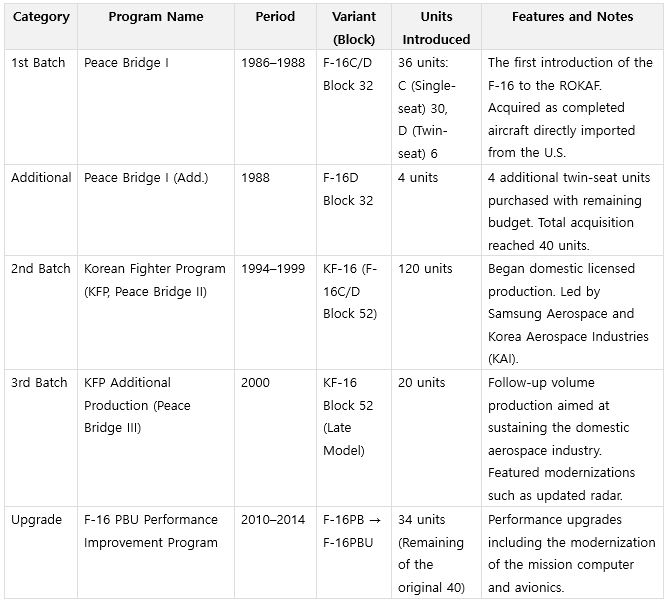
Total Units Introduced: Approximately 180 aircraft (40 units directly imported + 140 units under licensed production).
Major Aircraft Currently in Operation:KF-16C/D Block 52F-16PBU (Upgraded version of the Peace Bridge (PB) airframe).
4.4. Accumulation of Aircraft Maintenance and Modification Experience
The accumulation of aircraft maintenance and modification experience was a crucial process for the ROK Air Force to move beyond simply operating foreign aircraft and establish the foundation for indigenous aircraft development by securing the capacity for direct maintenance and upgrades domestically.
1970s onwards: Domestic maintenance depots performed parts replacement, engine overhaul, and structural reinforcement.
1990s: Performance improvements for the F-5E/F, resulting in the 'F-5EK/FK' designation, involved replacing multi-function displays, radar, and avionics, along with depot maintenance for aged airframes to extend their service life.
The ROKAF and domestic defense companies (KAI, Hanwha Systems, LIG Nex1, etc.) conduct maintenance and Depot Maintenance.
Currently, domestic companies are largely participating in the KF-16 Performance Improvement Program (KF-16P), which involves replacing the AESA radar, mission computer, and electronic warfare equipment.
This developmental stage progressed as follows: Securing self-maintenance capability through the accumulation of maintenance/modification experience → Acquisition of licensed production and upgrade technology → Establishment of the foundation for indigenous aircraft development.
Table 4. F-5, F-16 Introduction and Characteristics (Source: Wikipedia, Namuwiki)
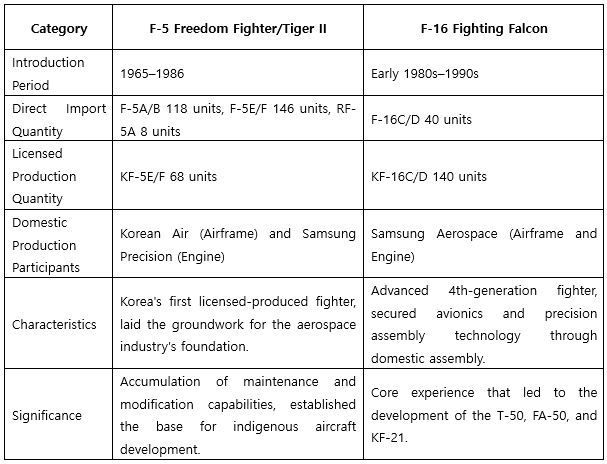
5. Indigenous Military Aircraft Development: KT-1 Woongbi (Basic Trainer)
5.1. Development Background
Until the late 1980s, the Republic of Korea Air Force (ROKAF) relied on U.S.-made trainers such as the T-41 and T-37 for pilot training. However, as the aging of these aircraft and the problem of reliance on foreign technology became increasingly apparent, the need for developing an indigenous trainer aircraft was raised. Consequently, the Agency for Defense Development (ADD) initiated the basic design in 1988. This was a crucial project pursued with the goal of fostering the domestic aerospace industry and realizing self-reliant national defense.
5.2. Development Process
In 1988, the Agency for Defense Development (ADD) and Daewoo Heavy Industries (now part of KAI) jointly commenced research and development for the indigenous trainer. Following this, the maiden flight of the prototype was successfully conducted in 1991, marking the birth of the first domestically produced fixed-wing aircraft in South Korean aviation history. The development was completed in 1995, followed by a decision to begin mass production. In 2000, the aircraft was officially delivered to the Republic of Korea Air Force, marking the start of its operational service.
Table 5. KT-1 Development Timeline (Wikipedia, Namuwiki)
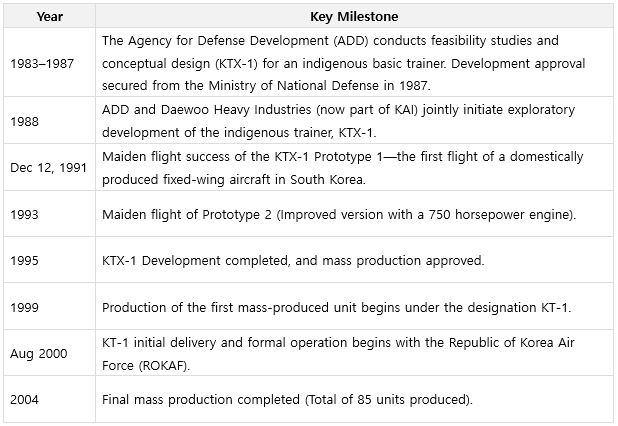
5.3. Technical Specifications
● Role: Basic Trainer (Responsible for fundamental flight training of pilot candidates).
● Crew: 2 (Pilot seat + Instructor seat).
● Engine: Pratt & Whitney PT6A-62 Turboprop Engine (950 horsepower).
● Maximum Speed: Approximately 574 km/h (357 mph).
● Range: Approximately 1,300 km (808 miles).
● Key Features:
- Low-wing, single-engine turboprop design.
- Capable of integrating a modern Glass Cockpit (Multi-Function Displays, HUD).
- Excellent maintainability and durability, contributing to reduced training costs.

Figure 2. KT-1 Configuration (Source: KAI)
5.4. Variants and Exports
The KT-1 played a pivotal role in the advancement of South Korea’s aviation industry through its various derivatives and export achievements:
● The KT-1B, an export variant with local assembly, was delivered to Indonesia.
● The KA-1, an armed derivative, is utilized for close air support (CAS) and reconnaissance missions.
● The aircraft also achieved remarkable success in the international market, with 20 units exported to Indonesia, 55 to Turkey, 20 to Peru, and 4 to Senegal.
Consequently, the KT-1 became the first domestically developed Korean aircraft to be exported as part of a combat aircraft family, marking a new chapter in the history of Korea’s indigenous aviation exports.
Table 6. KT-1 Exports (Source: Wikipedia, Namuwiki)
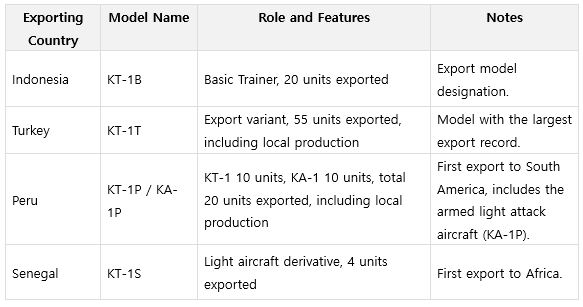
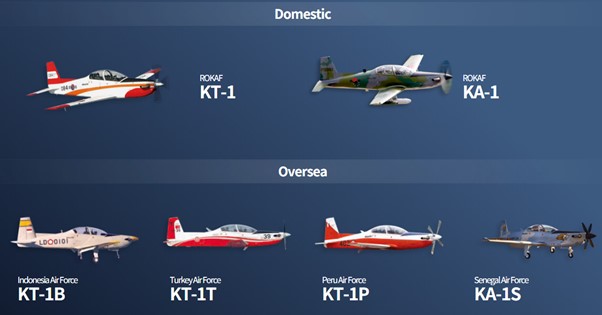
Figure 3. Domestic and International Operation of KT-1 Variants (Source: KAI)
5.5. Significance
The KT-1 Woongbi stands as South Korea’s first domestically developed fixed-wing aircraft and its first successfully exported military aircraft, marking a significant milestone in the nation’s aviation history. Through this achievement, the Republic of Korea Air Force gained the capability to conduct pilot training using domestically produced equipment, thereby reducing dependence on foreign systems and establishing an independent training infrastructure. Furthermore, the development experience of the KT-1 served as an essential technological and industrial stepping stone for the later development of the T-50 advanced trainer jet.
By successfully designing, developing, producing, and exporting its own aircraft, South Korea laid the groundwork for self-reliant national defense and ushered in a new era for its defense and aerospace export industry.
6. Indigenous Supersonic Aircraft Era: T-50 Golden Eagle (Advanced Trainer)
6.1. Background of Development
In the 1990s, the Republic of Korea Air Force faced the growing limitation that subsonic trainers such as the T-37 and A-37 could no longer meet the training requirements for pilots of modern supersonic fighters. With the expanding introduction of advanced aircraft such as the F-16, the need for an advanced and lead-in fighter trainer (LIFT) became urgent. In this context, South Korea launched the development of an indigenous supersonic trainer, not only to acquire a suitable training platform but also to secure independent aircraft development capability and enhance the competitiveness of its aerospace industry. This led to the joint development of the T-50 Golden Eagle by Samsung Aerospace (now KAI) and Lockheed Martin of the United States.
6.2. Development Process
6.2.1. Project Initiation (1992–1997)
In 1992, the Ministry of National Defense began formally reviewing the need for a next-generation advanced trainer. Preliminary design work started in 1997 under the project name “KTX-2,” led by Samsung Aerospace, with Lockheed Martin as a joint development partner. The total development cost was approximately 2.2 trillion KRW, funded 70% by the government, 17% by Samsung Aerospace, and 13% by Lockheed Martin.
6.2.2. Prototype Production and Maiden Flight (2001–2002)
● In October 2001, prototype production was completed, and on August 20, 2002, the aircraft successfully conducted its maiden flight.
● This event marked the first successful flight of a supersonic aircraft developed in South Korea, a historic milestone in the nation’s aviation history.
6.2.3. Development Completion and Testing (2003–2005)
● From 2003 onward, the aircraft underwent rigorous testing and evaluation by the Agency for Defense Development (ADD) and the Republic of Korea Air Force, successfully demonstrating its performance and safety.
● In February 2005, the T-50’s development was officially completed.
6.2.4. Mass Production and Operational Deployment (2005–2007)
● Mass production began in 2005, and the first aircraft were delivered to the ROKAF in 2007.
● The Air Force subsequently began employing the T-50 for advanced and lead-in fighter training missions.
6.2.5. Variant Development (2007–Present)
● Building upon the T-50 platform, several derivative models have been developed:
* FA-50 (light combat aircraft for tactical missions)
* TA-50 (armed trainer)
* T-50B (precision aerobatic version for the Black Eagles demonstration team)
● These variants have also been successfully exported, establishing the T-50 family as one of the most successful examples of South Korea’s aerospace industry.
Table 7. T-50 Development Timeline (Source: Wikipedia, Namuwiki)
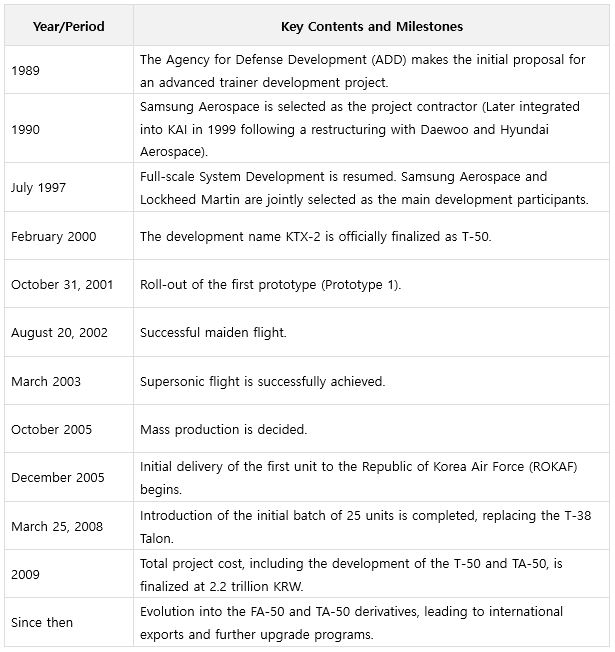
6.3. Technical Specifications
The T-50/FA-50 has a maximum speed of Mach 1.5 (approximately 1,837 km/h), a service ceiling of 55,000 feet (about 16.7 km), and a weapons payload capacity of 9,900 pounds (around 4.5 tons).
Table 8. Technical Specifications of the T-50 (Source: Wikipedia, Namuwiki)
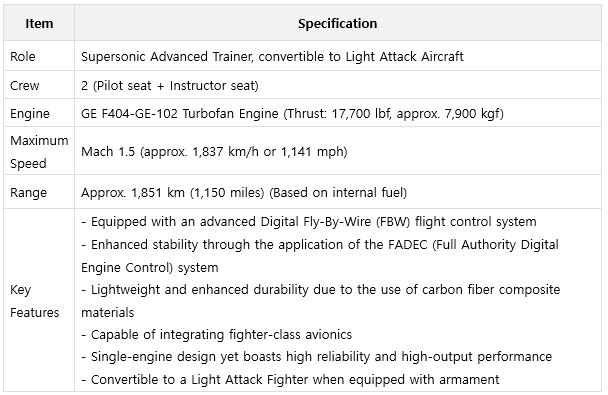

Figure 4. T-50 Configuration (Source: KAI)
6.4. Variants and Exports
The T-50 series aircraft were designed based on an advanced trainer platform, enabling them to perform not only pilot training but also light combat missions. Among these, the FA-50, a variant with enhanced weapon systems, has drawn international attention as a capable replacement for aging light or multirole fighters in many countries. Thanks to its performance, versatility, and cost-effectiveness, the T-50 and FA-50 family has been expanding its market presence, particularly in Europe and Southeast Asia. To date, over 140 units have been exported to more than six countries, establishing the series as one of South Korea’s most successful defense export achievements.
Table 9. T-50/FA-50 Exports (Source: Wikipedia, Namuwiki)
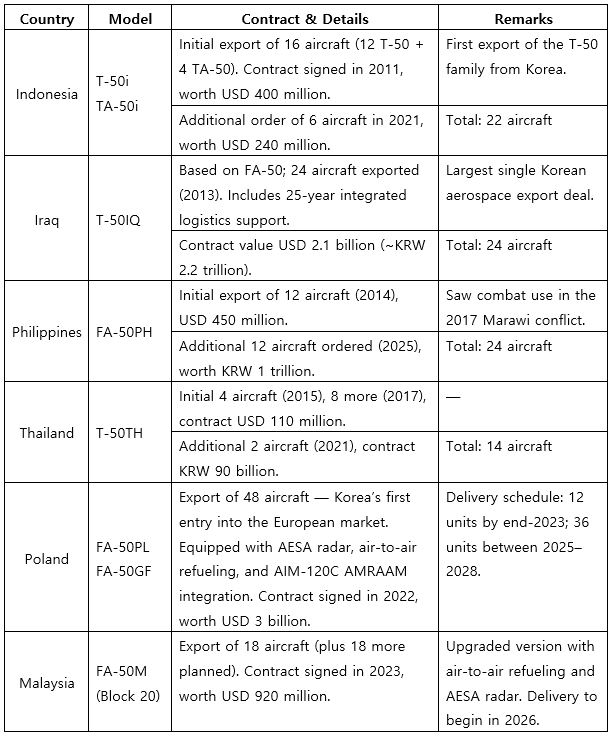
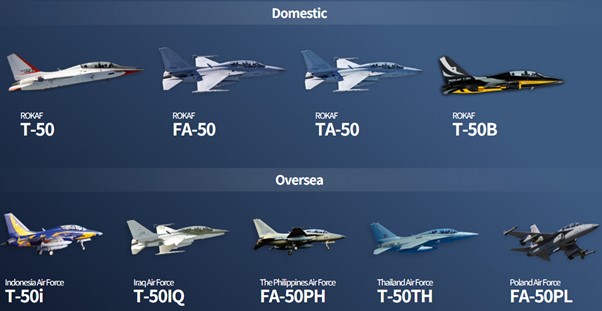
Figure 5. Domestic and International Operation of T-50/FA-50 Variants (Source: KAI)
Potential export markets include Colombia, Peru, Uzbekistan, Senegal, Egypt, the United Arab Emirates, Saudi Arabia, Slovakia, and Romania.
The T-50 family also demonstrates competitiveness as a candidate in the U.S. Navy’s Undergraduate Jet Training System (UJTS) program — a large-scale project aimed at replacing the aging T-45 Goshawk trainers.
Previously, the T-50 competed in the U.S. Air Force’s Advanced Pilot Training (APT), or T-X program, but lost to Boeing’s T-7A Red Hawk. The T-7A was selected in 2018, offering roughly half the price of the T-50 while boasting improved performance at that time. However, during development, the T-7A Red Hawk has encountered technical issues and supply chain problems with subcontractors, resulting in repeated delays and cost increases. As a result, the original development completion target of 2023 has been pushed back to late 2025, and deliveries are now expected in 2027. The final cost is also projected to be similar to or even higher than that of the T-50.
These delays in the T-7A program have made it difficult for the U.S. Navy to adopt the aircraft for its UJTS program, providing the T-50 family with a renewed opportunity to gain a competitive advantage in the U.S. Navy trainer aircraft market.
6.5. Comparison with Competing Aircraft
The main competitors of the T-50 Golden Eagle are the M-346 Master (Italy) and the T-7A Red Hawk (United States). All three aircraft belong to the advanced jet trainer (AJT) category and were developed for next-generation pilot training as well as light combat missions. A comparison of their key specifications is presented in the following table.
Table 10. Competing Aircraft of the T-50/FA-50 (Source: Wikipedia, Namuwiki)
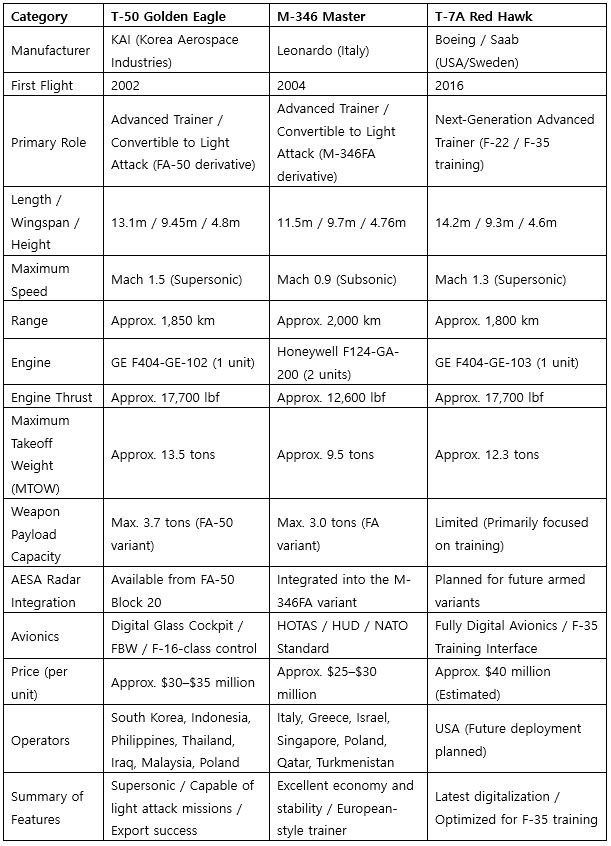
The T-50 focuses on performance — featuring supersonic capability and potential for armed variants.
The M-346 emphasizes cost-effectiveness and safety, offering efficient training performance.
Meanwhile, the T-7A represents a next-generation, technology-centered approach, being designed as a digitally networked trainer for the U.S. Air Force.
Each aircraft thus embodies a distinct strategic strength within the advanced trainer category.
● To date, the T-50 and FA-50 series have achieved exports of approximately 140 aircraft to six countries, establishing themselves as one of South Korea’s flagship defense export models.
● In comparison, Italy’s Leonardo M-346/M-346FA has also recorded exports of around 80 aircraft to six countries, with new orders from Austria (12 units) and Nigeria (24 units) further expanding its market presence.
As a result, the T-50 and M-346 families now stand in roughly equal competition in the global advanced trainer and light combat aircraft market.
● On the other hand, Boeing’s T-7A Red Hawk, developed for the U.S. Air Force, has faced development delays and technical challenges. Boeing received a two-year program extension from the U.S. Department of Defense, aiming to complete development by 2027, yet the program has reportedly incurred losses of about USD 1.3 billion, creating significant financial strain. The U.S. Air Force’s Advanced Pilot Training (T-X) program involves 351 aircraft under the base contract, potentially expanding to 475 units, with a total program value estimated at USD 9.2 billion. Furthermore, Boeing plans to supply approximately 145 additional aircraft under the U.S. Navy’s Undergraduate Jet Training System (UJTS) program, as part of its strategy to recover development costs and sustain the program’s long-term viability.
7. Establishing Advanced Military Capabilities: The KF-21 Boramae
The KF-21 Boramae is a 4.5-generation supersonic fighter jet independently developed by the Republic of Korea, an iconic project that represents the culmination of Korean aerospace industry's technological capabilities.
7.1. Development Background: Self-Reliant Defense and Bridging the Power Gap
The KF-21 development program (KF-X, Korean Fighter eXperimental Program) was initiated with two main core objectives:
● Addressing the Power Gap and Replacing Aging Fighters: To secure long-term combat capabilities and fill the power void anticipated by the large-scale retirement of obsolete aircraft in operation by the ROKAF, such as the F-4 Phantom and F-5 Je-Gong Ho.
● Securing Self-Reliant Defense Capability and Developing the Aerospace Industry: To secure independent fighter development and production capability without reliance on foreign technology, to foster the aerospace industry as a high-value future growth engine, and to possess an autonomous platform for performance upgrades when needed.
The initiative was formally announced in March 2001 by former President Kim Dae-jung's declaration to pursue indigenous fighter development and subsequently underwent long-term discussions regarding its feasibility and economic viability.
7.2. Major Development Process
The KF-21 development primarily progressed through the conceptual study, exploratory development, and system development stages, with Indonesia participating as a joint development partner.
7.2.1. Conceptual Study and Exploratory Development (2001–2012)
Table 11. KF-21 Exploratory Development Process (Source: Wikipedia, Namuwiki)
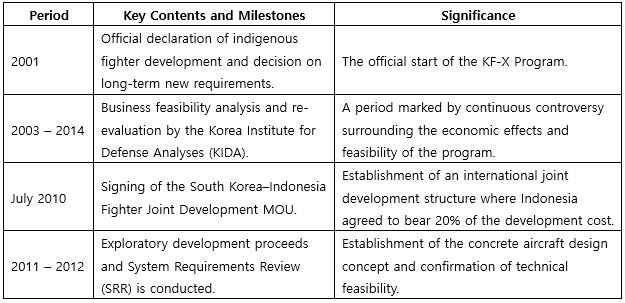
This was followed by a three-year period of in-depth review by government ministries and the National Assembly regarding the economic burden and technical difficulty of the KF-X program. Research institutes, particularly the Korea Institute for Defense Analyses (KIDA), consistently raised concerns about the program's uncertainties, which was one of the main reasons for the multi-year delay. Ultimately, the KF-21 development program was officially launched when the System Development contract was signed with Korea Aerospace Industries (KAI) in December 2015.
7.2.2. System Development and Prototype Manufacturing (2015 – Present)
Table 12. KF-21 Development Process (Source: Wikipedia, Namuwiki)
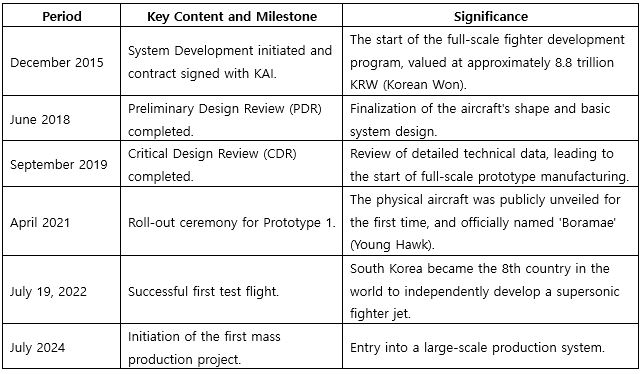
7.2.3. Future Plans and Objectives
The KF-21 is being developed in a phased manner using a 'Block' structure, targeting incremental performance upgrades.
• Block-I (After 2026): Focuses on securing air-to-air armament capability first, establishing the basic capabilities required to replace aging aircraft (F-4/F-5). Mass production is scheduled to begin in 2026, with about 40 units planned for delivery to the ROKAF by 2028.
• Block-II: Expands its multi-role mission capability, including the integration of air-to-ground armament operational capacity.
• Block-III (Long-term Goal): Aims to secure full 5th-generation class stealth performance by incorporating an internal weapons bay.
The KF-21 development is not only a symbol of self-reliant defense but is also highly regarded for its success in indigenizing core avionics equipment such as the Active Electronically Scanned Array (AESA) radar, which has fundamentally elevated the technological level of South Korea's defense industry.
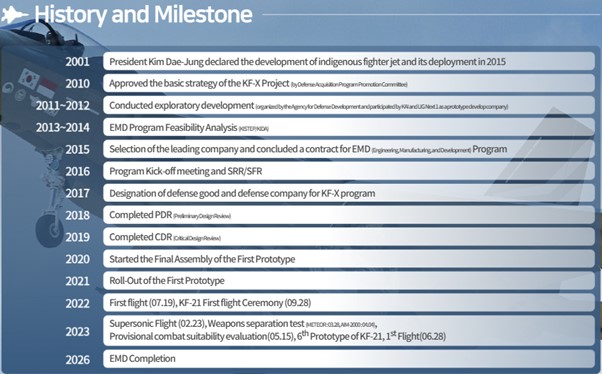
Figure 6. KF-21 Development Process (Source: KAI)
7.3. Technical Specifications
7.3.1. Basic Performance
The KF-21 has a maximum speed of Mach 1.8 (approximately 2,200 km/h), a service ceiling of 50,000 feet (about 15.2 km), and a weapons payload capacity of 17,000 pounds (around 7.7 tons).
Table 13. Technical Specifications of the KF-21 (Source: Wikipedia, Namuwiki)
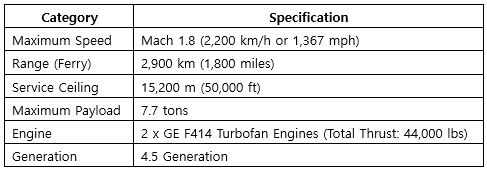

Figure 7. KF-21 Configuration (Source: KAI)
7.3.2. Core Technology — AESA Radar
The AESA radar, often called the “eye” of a fighter, differs from conventional mechanically scanned radars that operate with a single antenna. An AESA uses roughly 1,000 small transmit/receive modules that can be independently controlled to detect and track targets. Its data-processing speed is more than a thousand times faster than older systems, and it can track up to 20 targets simultaneously.
On 19 May 2023, Hanwha Systems announced that the KF-21’s AESA radar had received a provisional combat suitability certification on 16 May.
7.3.3. Stealth Capability
The initial program goal was to develop a single- or twin-seat multirole fighter with stealth performance that would in some respects exceed Rafale and Eurofighter Typhoon, while not aiming to match the stealth level of Lockheed Martin’s F-35 Lightning II.
At present, the KF-21 incorporates stealth shaping in its airframe design, but because internal weapons bays were not fully incorporated, it is categorized as a 4.5-generation aircraft rather than a full fifth-generation stealth fighter.
7.3.4. Advanced Sensor Suite
Hanwha Systems, in cooperation with the Agency for Defense Development (ADD), has developed four core sensors for the KF-21:
1) AESA Radar — multipurpose detection and tracking.
2) IRST (Infrared Search and Track) — detection of stealthy targets.
3) EO TGP (Electro-Optical Targeting Pod) — precision targeting.
4) EW Suite (Integrated Electronic Warfare System) — electronic warfare capabilities and countermeasures.
7.3.5. Indigenous Content Rate
With an indigenously developed AESA radar and a high parts domestic content rate of 65%, the KF-21 combines strong performance with competitive pricing. These attributes have attracted international attention and improved its export prospects in markets such as the Philippines and Poland.
7.3.6. Comparison with Competing Aircraft
Currently, the Republic of Korea Air Force has placed an order for 40 KF-21 Boramae fighters, while the Indonesian Air Force plans to purchase 48 units.
Based on these confirmed orders, Korea Aerospace Industries (KAI) is preparing for full-scale mass production and deployment starting in 2026, while simultaneously pursuing various international partnerships to expand into global export markets.
In future export markets, the KF-21 will compete directly with other 4.5-generation multirole fighters in the same class. These aircraft are positioned below fifth-generation stealth fighters such as the F-35 and F-22, but offer significantly improved avionics, sensors, electronic warfare systems, and low-observable (stealth) design compared with previous fourth-generation fighters such as the F-16, F/A-18, and Mirage 2000.
The following table compares the KF-21 Boramae with other major 4.5-generation competitors, including the Rafale, Eurofighter Typhoon, Gripen E, and F/A-18 Super Hornet, based on key specifications.
Table 14. KF-21 Competing 4.5 Generation Aircraft (Source: Wikipedia, Namuwiki)
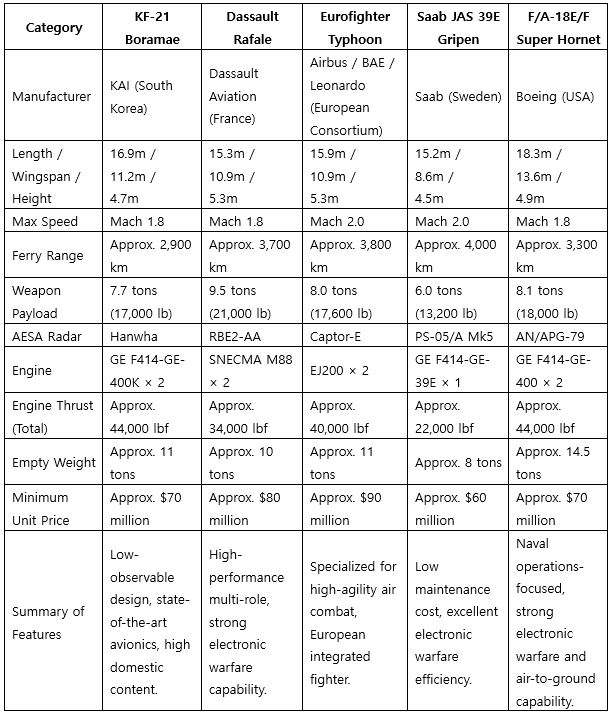
The KF-21 Boramae is regarded as a well-balanced 4.5-generation fighter comparable to the Rafale and Typhoon in performance, similar to the Gripen in cost, and among the highest in technological self-reliance.
It can be described as a medium multirole fighter that is more capable than the F-16 yet more economical than the F-35.
8. Conclusion
South Korea’s aerospace industry is no longer at the stage of merely following foreign technology.
The successful development of the T-50 advanced trainer, FA-50 light combat aircraft, and KF-21 next-generation fighter clearly demonstrates that Korea has evolved into a nation capable of independently designing, producing, and exporting advanced aircraft.
This achievement did not happen overnight. It is the result of over three decades of accumulated R&D capability, systematic talent development, established civil–military cooperation, and consistent national investment policies.
In particular, the localization of key technologies such as the AESA radar, avionics, and flight control systems, together with system integration expertise and export-proven platforms like the T-50/FA-50, have provided Korea’s aerospace industry with a solid technical credibility in the global market.
However, several challenges remain clear:
Korea must secure greater cost competitiveness, balance domestic demand and export supply, achieve complete independence in key components such as engines and avionics, and establish a sustainable international cooperation framework.
The Korean aerospace industry is now transitioning from an “era of technological acquisition” to an “era of industrial competitiveness”.
The coming decade will be a golden window of opportunity not only to achieve technological self-reliance but also to become a trusted global partner within the international aerospace supply chain.
With continuous innovation, collaboration, and export success built upon its existing technological foundation, the Republic of Korea is poised to become one of the world’s key players and strategic partners in the aerospace industry.

Unlock articles by signing up or logging in.
Become a member for unrestricted reading!